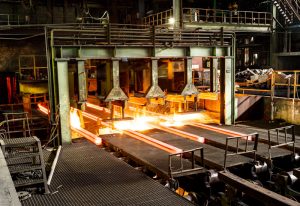The steel market in both the United States and Europe continues to experience supply constraints
The steel market is running two diverging narratives.
In the U.S., the market remains extremely tight. Mill lead times are out to the end of this year. Furthermore, prices are set to stay high into 2022.
The situation is not dissimilar in Europe. In Europe, the steel market is seeing a similar post-pandemic bounceback, supply chain restocking and constraints, like the U.S., by tariffs on imported material.
But in the rest of the world, global steel production seems to be slowing. Raw material prices — iron ore, in particular — are easing.
Are you under pressure to generate steel cost savings? Make sure you are following these five best practices.
Steel market narrative outside of US, Europe
According to Capital Economics, global daily steel production in May came in somewhat lower than April, as output in China dipped.
The World Steel Association reported global steel production rose by an impressive 16.5% year over year in May. However, this is against a 2020 reference point during which many countries were only starting to emerge from national lockdowns in May 2020.
But looking at the month-over-month growth rate, daily global steel output fell by 0.4% in May. That followed a 3.5% rise in April.
At the same time, Beijing’s combination of dire warnings about manipulative speculative pricing, restrictions on credit for construction and pressure on polluting industries to reduce emissions have combined to cause a sharp correction on the previously buoyant iron ore price, down 9% on the Dalian exchange to $173/ton this week.
No respite for US steel consumers
It is unlikely a cooling steel market in China will offer much respite to U.S. consumers. The two markets operate in parallel universes.
The Section 232 tariffs had the desired effect back in 2018-19, raising the fortunes of domestic mills. However, one hoped-for outcome, more domestic capacity, didn’t materialize. Even the current surge in prices has failed to encourage much more.
We are seeing a confluence of restrained supply overwhelmed by massive bounceback demand. It is a squeeze if not orchestrated by the mills then at least assisted.
Nor will the widely reported probable removal of Section 232 tariffs on European mills this year have much impact on metal supply to U.S. consumers. Europe is almost as tight as the U.S. and simply doesn’t have much capacity to supply the U.S. market in 2021.
The Biden administration is looking to relax the Section 232 tariffs, at least as far as Europe is concerned. It is a move widely seen as a bid to corral like-minded allies against overcapacity in China.
Section 232 easing?
In the longer term, relaxation of Section 232 for European suppliers will be welcome news for steel consumers and, possibly in time, help ease some of the pressure on elevated prices later in 2022.
But the real story will be around how the administration handles the application of Section 232 on Japan and other Asian countries. In addition, it will be critical to see what steps trade negotiators take on quotas for Brazil and South Korea.
Section 232 has certainly spurred a resurgence in margin for the domestic steel industry.
Capacity utilization rates are at near all-time highs. However, Section 232 has also inhibited one potential source of supply, imports, at a time when the market is suffering a supply-side squeeze.
The administration will be seeking to balance political and economic issues in reviewing the tariff and quota structure — a process for which there is no quick fix.
Steel consumers have the prospect of high prices for at least the balance of this year and into next, regardless of a decision on Section 232.
More MetalMiner is available on LinkedIn.



Leave a Reply